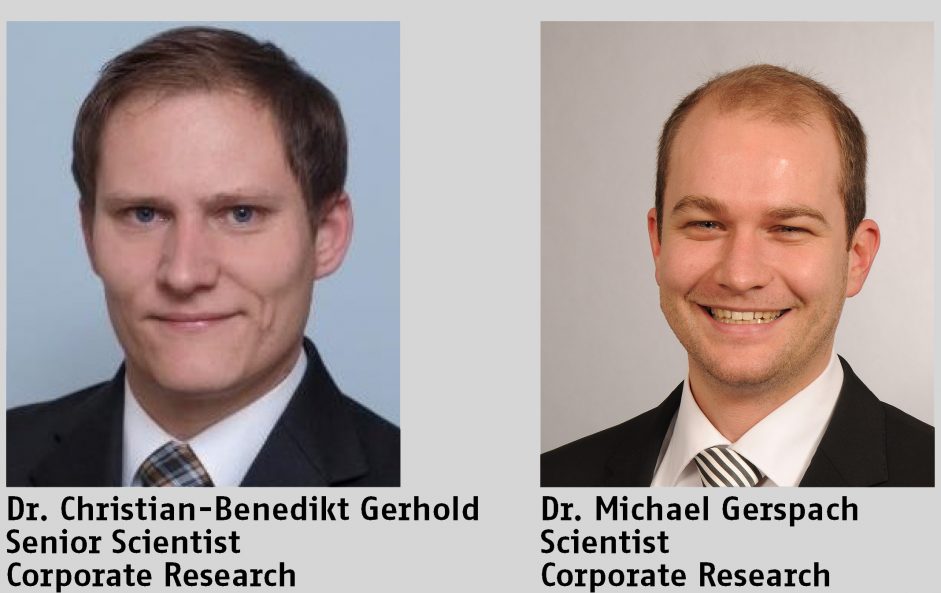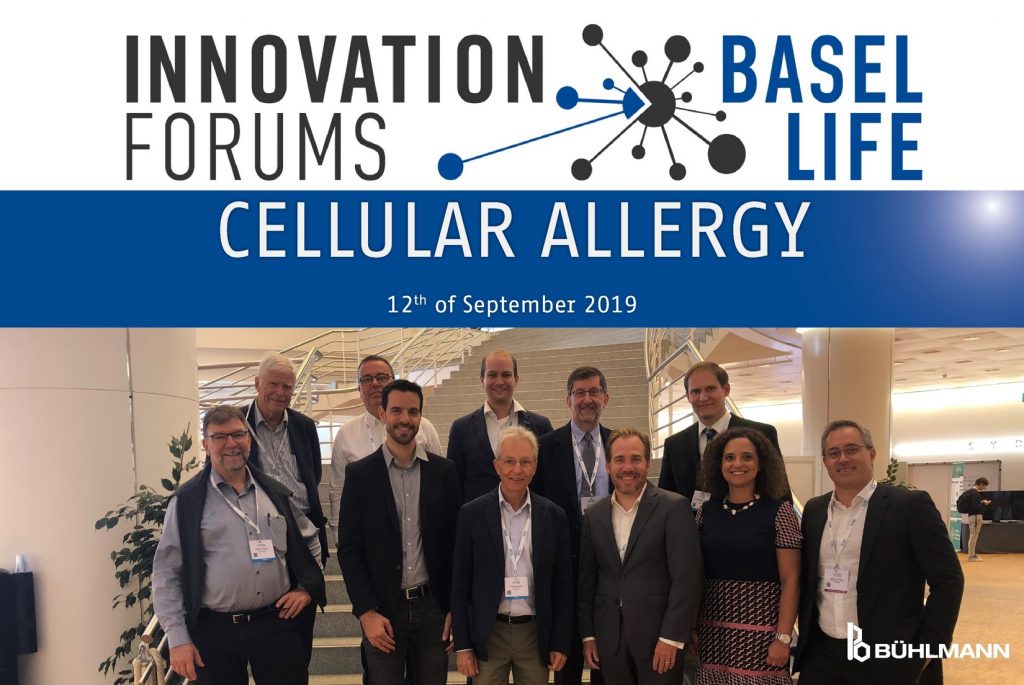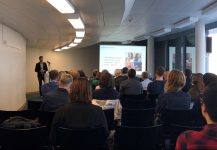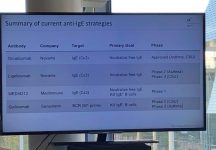Basel Life 2019 – View of the Chairs
Dr. Alexander Eggel introduced an in vitro maturated DARPin based IgE binder, which is based on two designed ankyrin repeat protein scaffolds that concomitantly bind two distinct epitopes on the allergen recognizing IgE antibodies. The very high affinity breaks the interaction of IgE with the FcεRI highlighting its therapeutic potential in allergy treatment.
Dr. Shreffler indicated that oral immune therapy (OIT) to treat allergies has a very heterogeneous outcome and approximately 30% of the allergic patients experience no benefit by OIT. Single cell RNA-seq of a specific subset of immune cells indicates that there are specific signatures of cytokines that favour or disfavour OIT success. High expression of Th17 cytokines for instance appear to be advantageous for successful immune therapy.
Dr. Heusser compared the two IgE binding antibodies omalizumab (Xolair ®) and ligelizumab to show that they recognize two very distinct epitopes on IgE. Therefore, each biologic interferes with one of the two distinct IgE receptors (FcεRI and CD23) to downregulate either bronchoconstriction or inflammatory responses.
Dr. Santos illustrated that titers of specific IgEs do not necessarily correlate with the allergic phenotype and that cell based assays, such as the BAT and MAT (basophil or mast cell activation test) have superior diagnostic value. Moreover, she suggested that using BAT and MAT in clinical routine may supersede 70-90% (depending on the allergen) of anxiety-prone oral food challenges.
Prof. Girard highlighted IL-33 as a key mediator of several allergic diseases, such as asthma. The N-terminus of full-length IL-33 is cleaved by protease containing allergens releasing a biologically more active form of IL-33 that elicits a strong immune response by the rapid and efficient induction of group 2 innate lymphoid cells.
Allergic reactions are triggered by intracellular signalling cascades orchestrated by various kinases, such as PI3Kγ. This kinase requires an adaptor protein, which can be either p84 or p101. Prof. Wymann’s group showed that only in the presence of p84, but not p101, PI3Kγ mediates mast cell degranulation. This suggests a non-redundant role of p84 in allergy signalling that may represent a promising therapeutic target.
Dr. Amour from GSK was involved in the development of a PI3Kδ inhibitor that showed promising effects on allergic effector cells derived from asthmatic patients as well as in murine models of allergen-induced airway inflammation.
Prof. Bochner makes use of the fact that kinase inhibitors that are commonly used in the treatment of lymphomas or lymphatic leukemias also inhibit allergic signalling cascades. Indeed, his team was able to show that administration of different Bruton’s kinase inhibitors, such as ibrutinib (Imbruvica) or acalabrutinib (Calquence) strongly alleviated patients’ symptoms in skin-prick or basophil activation tests.

The Corporate Research Laboratory (CRLab) at BÜHLMANN Laboratories AG (BÜHLMANN) was founded October 2017 with the aim to assess new approaches for in-vitro diagnostics (IVD). Two scientists, Dr. Michael Gerspach who has a PhD in nanosciences and Dr. Christian-Benedikt Gerhold with a background in biochemistry and molecular biology established CRLab at BÜHLMANN.
One important pillar of CRLab is the close collaboration with Prof. Daniel Gygax who is the leader of the IVD group of the Fachhochschule Nordwestschweiz FHNW, Muttenz. This academic network was further extended to research groups at EPFL, Lausanne and the University of Zurich and allows CRLab at BÜHLMANN to conduct proof-of-principle experiments of novel concepts and to implement these insights into the product development pipeline of the company. CRLab therefore sits at the interface between academia and industry and functions as an entry point for academic ideas that may lead to innovative diagnostic products. Corporate Research scientists aim to harmonize ambitious academic visions with the stringent requirements of industrial processes and thus facilitate the transition of great ideas into unique selling propositions.
CRLab also educates fellow scientists and started to build a track record of successfully trained Bachelor and Master Students. Research results will be patented and prepared for publication in peer-reviewed journals, further demonstrating that CRLab is actively engaged in research that is of interest for the company and beyond. Last but not least, another important task of CRLab is the scientific exchange with key opinion leaders and outreach to the scientific community. For this purpose, CRLab has organized the Innovation Forum on Cellular Allergy at the Basel LIFE 2019 and continues to do so in the upcoming years. During this innovation forum, various aspects of Cellular Allergy were covered from different perspectives by applied scientists, medical and basic researchers.
Impressions Basel Life 2019






Social Links